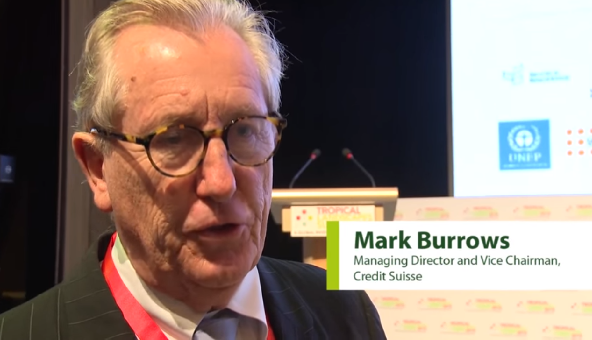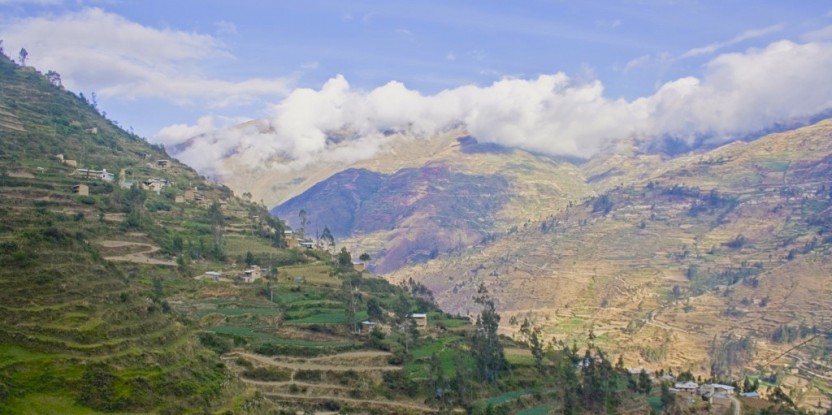LONDON, England: The pieces of the sustainable landscape investment puzzle have very jagged edges, and moves are under way to make all those rough edges fit.
One piece lies with the direct custodians of forests and agricultural land who need money to improve their practices and make them more sustainable, especially in developing tropical countries where shifts from one land use to another can have serious environmental consequences.
Global investors hold another piece. They may be on the lookout for people interested in borrowing capital from them in exchange for a profitable return.
Then there’s a multitude of financial institutions and, increasingly, public bodies, eager to connect with those pieces.
OPPORTUNITIES AVAILABLE
Financiers, scientists and policymakers will meet in London next month for a special investment symposium of the Global Landscapes Forum where they hope to bring out the picture at the center of this puzzle.
“Our hypothesis is that investment in sustainable land use can provide interesting returns for large-scale investors,” said Peter Holmgren, Director General of the Center for International Forestry Research (CIFOR), the lead coordinator of the event.
“The premise is that this is a sound investment in its own right,” he added.
If farmers and forest users invest in sustainable practices and businesses, they may gain technical knowledge, improve productivity, and access to new markets, thereby generating more profit, and improving social conditions where they live.
Many local commercial banks and micro-lending institutions have been reaching smallholder farmers and forest users for years, often with the support of global investors
But to enter this circle in the first place, they need access to affordable capital to fund resources such as equipment, seeds, and training.
Many are too small to access finance from large banks, and the loans available to them locally are often expensive and restricted to short periods.
For example, farmers who want to upgrade to more efficient varieties may only find loans on offer that have terms shorter than their crop cycle.
But there is good news.
“Many local commercial banks and micro-lending institutions have been reaching smallholder farmers and forest users for years, often with the support of global investors,” said Mark Burrows, Managing Director and Vice Chairman of global investment banking at Credit Suisse.
Burrows acknowledges that the number and complexity of those intermediaries are rarely similar to large investment banks. A good starting point to bring them together, he said, is to recognize that “most providers of private capital require risk assessment and returns”.
THE INVESTMENT LURE
So how do you get investors to fund sustainable landscapes?
Mark Burrows sees much potential in green bonds – whereby financial institutions borrow capital from the financial markets and commit to invest the proceeds in projects with environmental benefits, including sustainable land use.
“Green bonds allow local institutions to borrow in local currencies for longer periods than would normally be accessible to them,” he said.
The global value of green bonds is strong and getting stronger.
Burrows said that returns could be used to finance sustainability commitments in the palm oil industry, for example – including improving the practices of smallholder farmers.
The European Investment Bank (EIB) has developed increasingly sophisticated investment products designed to spread risk and combine financial performance with sustainability achievements. It has also created the Climate Fund in partnership with Althelia.
“Now sustainable land use becomes the core reason for supporting a REDD+ project,” said James Ranaivoson, managerial adviser for structured transactions and fund investments at EIB. “For example, an agricultural project may incorporate forest conservation, which comes as a complement or a trigger to launch the project.”
Such efforts to mix profitable investment with environmental and social achievements are reflected on the investor side of the Althelia Climate Fund.
The US Agency for International Development has agreed to guarantee a minimum share price to the fund investors “because the fund is interested not only in carbon credits, but also in broader sustainable development,” Ranaivoson said.
THE LANDSCAPE FUND, THE FUTURE
Another proposed instrument is the Landscape Fund, a brainchild of CIFOR and the Munden Project.
“Long maturity and low interest rates are vital to allow sustainable land-use practices to flourish. The fund aims to provide them on a wide scale,” said Lou Munden, chief executive of the Munden Project. “It won’t extend loans directly to producers, but to aggregators who will make large numbers of loans to producers in their respective regions.”
A pilot of the fund will bring together a network of those aggregators, mostly rural credit institutions and producer organizations, and help them provide loans to their members.
We have a strong research platform, but it still needs to be informed by primary research from others
The promoters of the Landscape Fund are building the verification of sustainability achievements into its design.
Verifiable production of public good by borrowers—like better environmental and social conditions—will encourage their governments to provide them with better support, such as protection against default, which in turn creates a competitive advantage for those farmers engaging in sustainable land use.
“Unsustainable practices won’t have that advantage, because they can’t make a reasonable case for this kind of public support,” said Munden.
The pilot phase of the Landscape Fund will present an opportunity to dispel any concerns about its model of networked financing to smallholder farmers, according to Munden.
“We’re certainly starting with a disproportionate focus on smaller borrowers, because integrating them into the fund requires more time and effort. Still, we are also evaluating certain commercial operations,” he said.
When the Landscape Fund achieves scale, Munden believes it will show its value to investors.
“Hopefully, that means the public will be able to reduce its support of the fund as private investors become more comfortable with the value proposition,” he said.
Diversification over small and large farms, Munden said, will protect the scheme from the speculation seen in past instances of large-scale investment into packaged small loans – most famously during the US sub-prime mortgage bubble.
Local lenders will also keep part of the loans on their books rather than relying solely on outside investors to finance them, adding another layer of protection.
CIFOR’s Peter Holmgren believes that the Landscape Fund pilot will constitute “action-based research” within a range of issues on which scientists can provide investors with evidence.
“We need to show that investments provide sustainability outcomes in addition to financial returns,” Holmgren said.
To achieve such verification, science can provide indicators to measure change, and methods to apply them on larger scales—especially when many smallholder farmers are on the receiving end of investment.
“If you attempt to measure indicators at every farm where credits are provided, it will be very expensive,” said Holmgren. “We can draw from experiences such as national forestry inventories, using samples to provide aggregated results.”
CIFOR is planning to build a knowledge base of land uses that are sustainable and provide long-term financial returns, to inform both land users and investors, he said.
Financial institutions need this data, in order to match investors to projects.
James Ranaivoson of the EIB said the bank’s range of financial instruments could be set into motion “once science tells us: this is the way to do it and to measure it”.
“We have a strong research platform, but it still needs to be informed by primary research from others,” said Mark Burrows of Credit Suisse. “It’s the credibility of the research that will drive investor response.”
As all the pieces of the puzzle converge in London for the Global Landscapes Forum, Holmgren said he hopes a more permanent dialogue will follow, and emerge into a complete picture that can continue to be expanded and built on.
We want you to share Forests News content, which is licensed under Creative Commons Attribution-NonCommercial-ShareAlike 4.0 International (CC BY-NC-SA 4.0). This means you are free to redistribute our material for non-commercial purposes. All we ask is that you give Forests News appropriate credit and link to the original Forests News content, indicate if changes were made, and distribute your contributions under the same Creative Commons license. You must notify Forests News if you repost, reprint or reuse our materials by contacting forestsnews@cifor-icraf.org.


